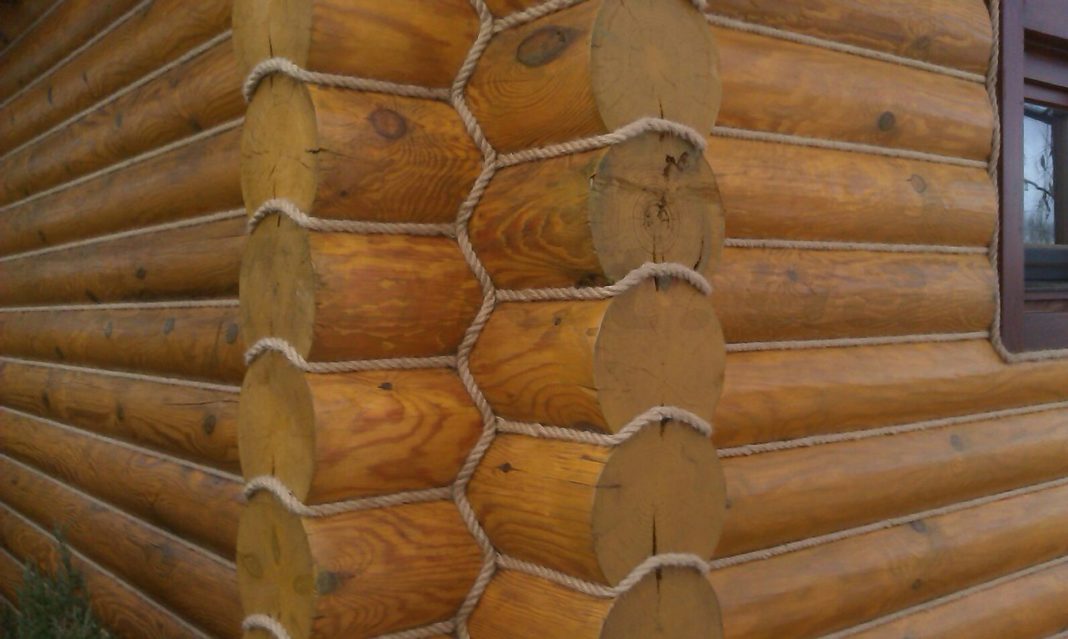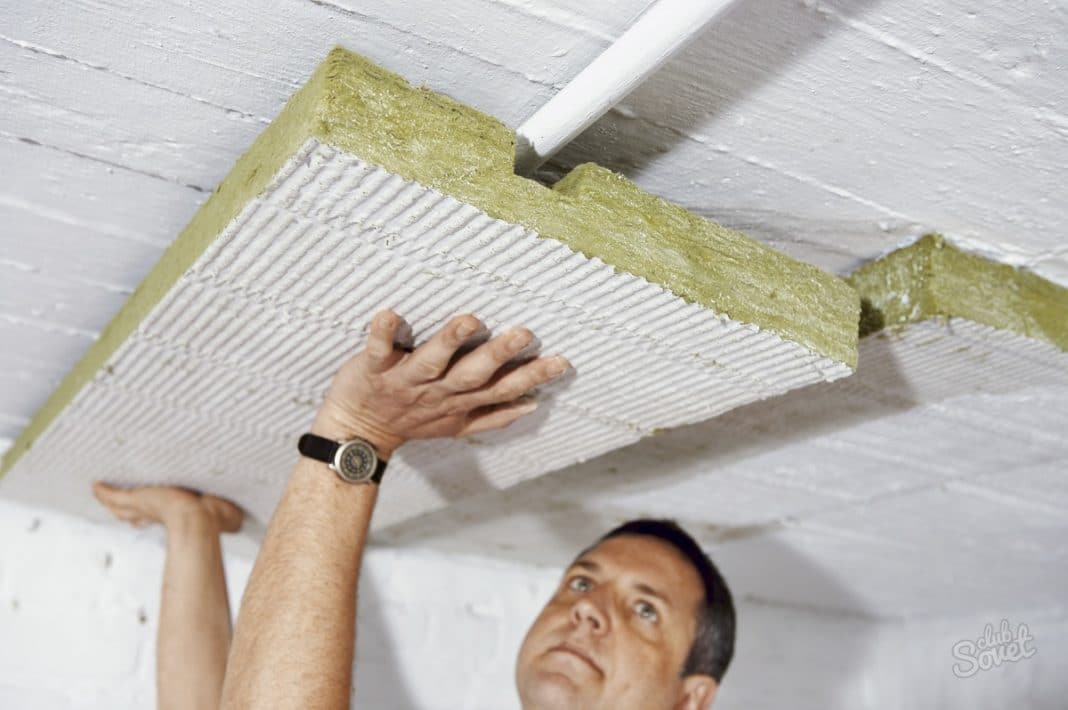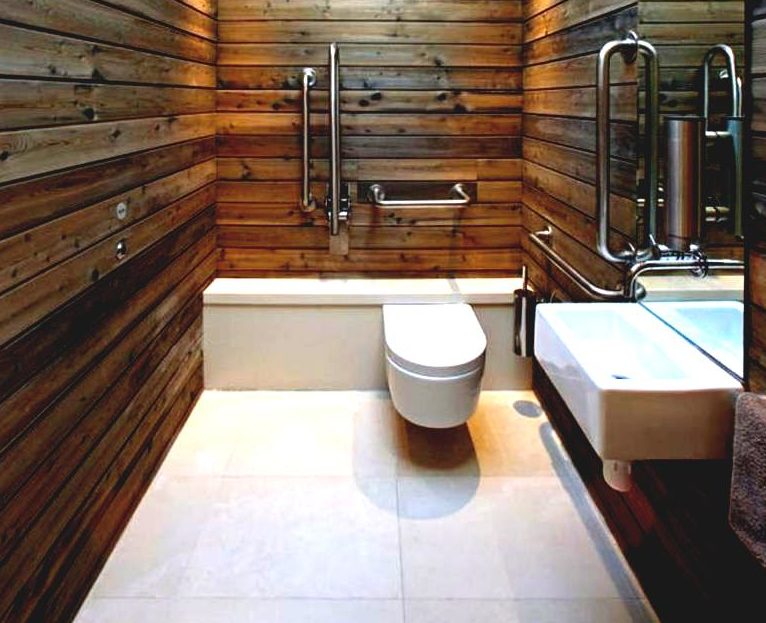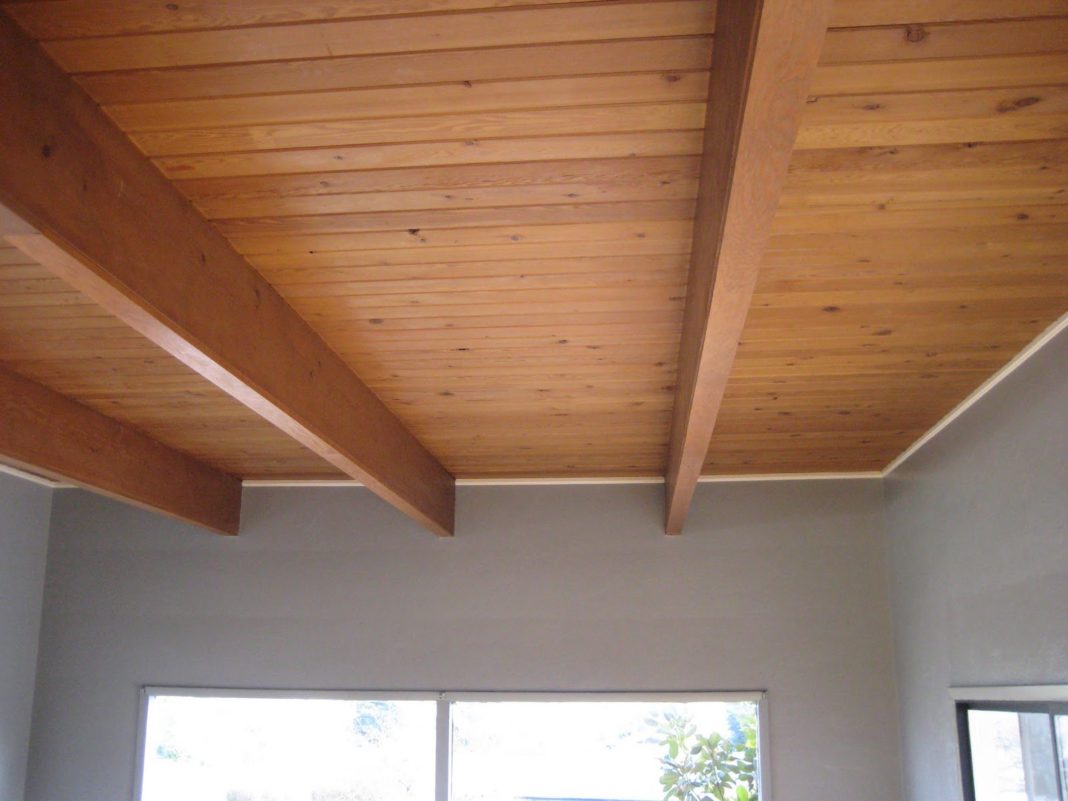Simple caulking of log cabins with jute not only insulates the home from noise, cold, and moisture but also protects the logs from rotting and cracking.
Which Sealant for Gaps is Better to Choose

Lnovatin
To maintain the internal microclimate, retain heat, and prevent moisture and cold from entering, log homes need to be specially treated – caulked, i.e., the gaps between the logs need to be filled. During construction, wood is laid on moss for better adhesion, but this is not enough to seal all the gaps between the building materials. As the logs dry, additional gaps form. Therefore, it is necessary to caulk the log cabin not only during construction but also a couple of years after construction, when the logs have completely dried and all unnecessary gaps have appeared.
Caulking a log cabin is very easy to do yourself using natural materials and simple tools. Common materials for caulking log cabins include:
- lnovatin;
- wool felt;
- oakum;
- jute.
They have their advantages and disadvantages, knowing which you can choose the most suitable material.
Lnovatin is a product of grinding and pressing flax. The material prevents the rotting of logs but is not durable. Wool felt is warm but crumbly and not dense. Therefore, moisture easily penetrates through the felt, causing the logs to rot easily. Oakum can also accumulate excess moisture and cause the logs to rot.
Jute is soft wood fibers collected in a bundle. It is produced from shrubs of the linden family, growing in Asia. The product of wood processing is the most modern and durable material compared to its plant and animal analogs. Jute fibers are stronger than fishing line and fit tightly enough to prevent excess moisture from entering the home.
Since this material is completely natural, it is absolutely harmless, does not emit toxic fumes, and does not cause allergic reactions in the home’s inhabitants. Unlike lnovatin and felt, jute is resistant to rot, moths, and protects the logs from birds.
The main advantage of the material is its hygroscopicity. The fiber absorbs excess moisture from the logs, preventing them from rotting. In dry weather, jute releases the accumulated moisture to the wood, so it does not crack. The disadvantage of jute is that it consists of wood fibers and therefore reacts to changes in weather conditions like wood: it dries out in dry weather and swells in wet weather.
Types of Jute and Their Application

Jute is available in the form of rope, cable, twine, cord, or tape. The thickness and width of the material can vary. Thin oakum or jute rope can be easily caulked by hand into old cracked logs. Jute tape facilitates the process of sealing gaps around doors and windows. It is also used to fill gaps in building materials. Sealant made from cable and rope looks the most aesthetically pleasing and does not require additional processing. Thin ropes and cords are suitable for finishing not only walls but also floors and ceilings.
The main producers of jute are India, China, and Kazakhstan. The highest quality and most expensive product is produced in India. The width and thickness of jute directly affect its cost. The sealant is sold in the form of skeins and bobbins, which are gradually unwound during use. Working with natural material is quick, easy, and does not leave extra waste, like synthetic sealants. Jute sealant materials reliably bond with other building materials.
Jute oakum has good elasticity, so it easily takes the shape of the surrounding space. The material made of wood fibers withstands frost and heat well and does not crumble. In its properties, jute made of wood fibers is similar to wood. Such material can be subjected to various treatments. It reacts to impregnation with resins and painting in the same way as wood: it does not dry out and does not crumble, does not let heat and moisture through.
Ordinary jute is suitable for sealing walls that do not bear any additional loads. It is easy to install with your own hands without any special skills. Some types of jute products have a special impregnation that makes the sealant fireproof, waterproof, or turns it into sound insulation. For this, special resins and synthetic sealants are used.
Preparatory Work

Wood Antiseptic Treatment
Since jute is a durable material, there may be no need for repeated caulking, which saves time and money. However, to ensure that the caulking done with your own hands lasts a long time and reliably seals the home, it must be installed correctly. For this, it is necessary to prepare in advance, prepare tools. It is necessary to select jute of such width that corresponds to the width of the gaps between the logs.
To prevent the logs from rotting and deteriorating, the gaps must be properly treated before caulking. For this, special wood antiseptics are used. The sealant is installed only in dry gaps. It is best to carry out caulking in the summer, warm dry spring or autumn. The air temperature should not be below +10°C, and there should be no rain. Very hot weather is also not suitable, as the logs dry out excessively, which can lead to overconsumption of jute.
Jute materials are easily torn by hand. Without using any special means, the installation of the sealant with your own hands can be done quite quickly and simply. However, such a finish will not look very aesthetic, so it cannot be used for walls that bear decorative loads. To make the caulked walls look neater, the pieces of insulation should be the same and have even edges. For this, jute should be cut with a sharp knife or scissors. Therefore, the tools should be sharpened in advance.
The sealant should be carefully inserted into the gap using a special metal caulking tool that visually resembles a small chisel. If there is none, it can be replaced with a thin chisel. For hammering the sealant into the gap, you will also need a hammer and a rubber mallet. If the gaps are small, you can use a jute rope of small diameter. If the rope is narrow and the gaps are large, it is better to fold it several times.
Process of Filling Gaps Between Logs
If the gap between the logs is even and approximately the same, the insulation can be stuffed into the recesses with a special wide spatula – a roader. This allows you to speed up the work. If the recesses are uneven, with narrow gaps, it is better to use a tool with a sharp tip. If the gaps are crooked and the sealant needs to be hammered into them at an angle, it is better to use an oblique metal caulking tool.
Gaps and joints can be treated with jute in different ways. The choice of method depends on the size of the gaps and the desired aesthetics. There are 2 main approaches to laying the sealant:
- In tension. The material for sealing is taken in separate strands and pushed with a thin tool along the gap between the logs. From the hanging remains of jute, a roll is formed and tightly tamped into the groove using a thin tool and a hammer. This method is suitable for processing small gaps, allowing you to create good thermal insulation. However, the wall looks not very aesthetic due to the insulation remains sticking out from under the logs.
- In assembly. This method allows you to process even the largest gaps. For this, jute fibers of the required length are taken, which are then wound into balls. The larger the gap, the larger the ball should be formed. Then, the formed balls are tightly stuffed into the gaps using a chisel and a hammer. When using this method, the edges of the insulation do not protrude from the gaps between the logs, thanks to which the processed walls look more aesthetic.
Caulking should be done evenly, in a circle, level by level. It is necessary to move from bottom to top. If each wall is processed separately, the entire structure may warp due to the uneven distribution of weight. It should be taken into account that after caulking, the structure can grow in height by almost 15 cm.








